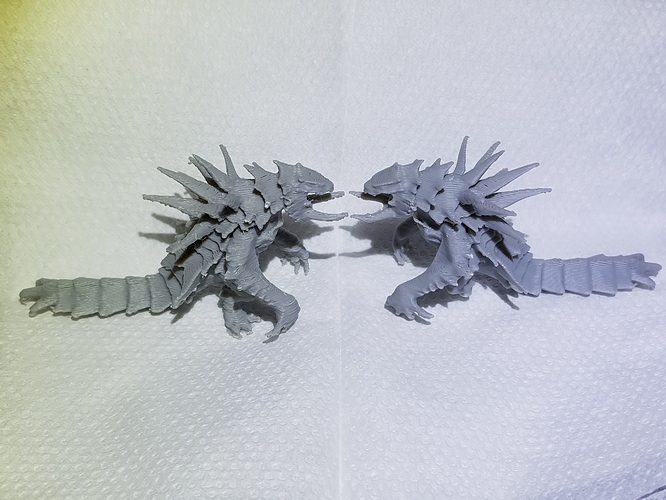I’m a little late to the conversation, but want to Toss my 2cents in.
This problem is not a Pi issue, not an Octoprint issue, not a Klipper issue, and not a printer MCU issue per se. The issue is inclusive of everything in the stack, hardware and software.
It you replace one item in the stack, you’ll get better results. I’ve seen it myself.
The issue is a combination issue, in my experience. 1) Pi hardware (CPU memory and USB speed)
2) Octoprint Comms. The community is aware of this thus it’s being addressed
3) MCU USB. This is also an issue. Many older AVR MCU’s have a slapped together USB to serial interface.
4) MCU clock rate.
5) MCU bit rate. Yes, 8 bit boards have limitations such as +100mm/s printing on CoreXY printers and Delta printers.
6) python version sun setting. This may have a factor albeit minor.
It’s possible that Octoprint 1.4.0 will fix it as there is a new communications solution being designed. This is still “vapor ware” as it’s not completed and in the hands of users, so we cannot comment yet.
Changing out Octoprint for something else has also resolved, or at least minimized the issue.
Changing out your current Pi for something else WILL fix the issue. Many Klipper users who use a PC running Linux do not experience issues. Why? MANY reasons.
- Some Pi have 64 bit cpu but Raspbian OS is 32 bit.
- many Pi have 1GB or less RAM
- Pi RAM is cheap and S.L.O.W.
- Headless Pi installs run faster.
- May be using the wrong SD card in Pi
- slow USB chipsets are used
I’ve upgraded my Octoprint to an Asus TinkerBoard it’s still 32bit, but CPU is 1.8Ghz, 2GB RAM and it’s faster. Better USB chipset. Higher quality SD card. All around a better option and this has fixed a couple issues. I have an Odroid X4U on my bench waiting to be configured.
MCU - many 32 bit boards have implemented a native USB to Serial interface. This is one bottle neck. Another is the amount of flash RAM on he MCU. Some 8bit boards have as little as 8k, which doesn’t leave room for much buffering. 32 bit MCU’s have more, way more and some 8bit boards have more too.
I hope I’ve shown that it’s a issue of the entire stack, and the more little issues you have in your specific stack, the greater chance you can induce the problem. Change one piece and you’ll get better results.
I’d suggest swapping out your current Pi for something else. Would a Pi4 work? I don’t know as I don’t have one. By the specifications, cheap components are in use.
I’m having good luck with the Asus, and I can send you installation documents. Some Klipper/Piper builders are using an AtomicPi with great results too. Other Klipper users are using an old laptop with a flavor of Linux like Ubuntu.
My personal opinion; a Pi replacement now and Octoprint 1.4 later will be the right long term solution. If you can toss in a 32 bit MCU upgrade as they are getting less expensive, than you will have a complete fix for the issue.
Many 32 bit MCU’s are still being developed in Klipper, so there are going to be some limitations, which are being addressed daily.
OctoPrint and Marlin has had similar issues. I’ve addressed it somewhat on my Anet A8 with a buffer increase while loosing SD Support due to limited MCU RAM.
I’m currently working on a Klipper configuration using an 32bit SAMD51 Adafruit Grand Central M4 with a modified RAMPS shield. The Grand Central has the same footprint as a Arduino MEGA and Due with 120Mhz clock that can be overclocked to 200Mhz





